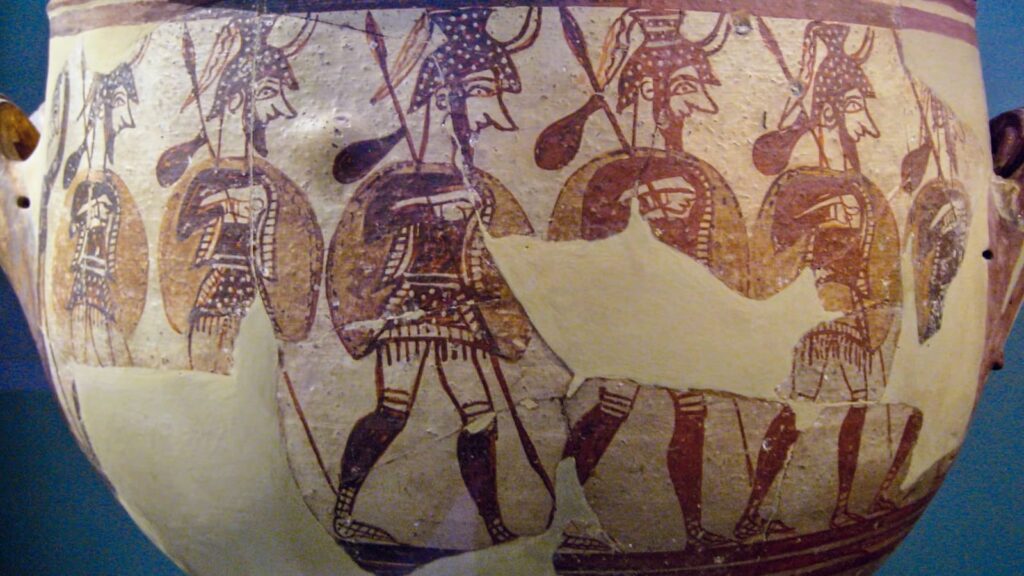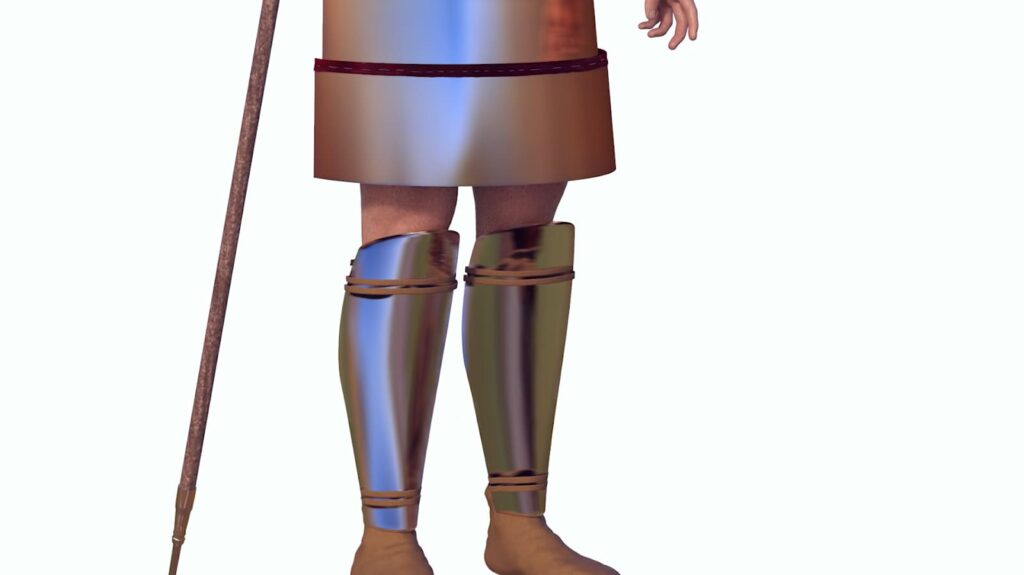Greaves primarily serve to shield the tibia, or shinbone, a vulnerable area due to its proximity to the skin and susceptibility to attacks. A direct hit to the shin can incapacitate a leg, significantly limiting mobility. To mitigate this vulnerability, greaves were developed, typically featuring a sturdy metal exterior coupled with an inner layer of felt padding. This padding is crucial as it absorbs the impact, preventing the force of any blow from being directly transmitted from the metal to the shin. This design effectively combines protection with comfort, ensuring the wearer’s ability to move and defend effectively in combat situations.
Bronze Greaves, which safeguarded the legs of ancient warriors, were as crucial as the Bronze Age shields that defended them in the heat of battle, both forming an indispensable armor ensemble that has intrigued historians and enthusiasts alike.
Bronze Age Beginnings
During the Bronze Age, Mycenaean Greeks and the Central European Urnfield culture were among the prominent users of Bronze Greaves. These early iterations of greaves played a crucial role in the protective gear of warriors.
Classical Antiquity: Greece and Rome

References to greaves (κνημίδες in Ancient Greek) are found in classical texts like “The Shield of Heracles,” “The Iliad” and “The Odyssey,” “The Bibliotheca” of Pseudo-Apollodorus, and “The Aeneid.”
- In “The Iliad,” Greek forces are often called “well-greaved Acheans” (ἐϋκνήμιδες Ἀχαιοί), highlighting their importance in warfare. Despite the mythological nature of these texts, their mention of greaves indicates their actual use;
- Roman light infantry, known as hastati, also used greaves, as noted by historical sources from Polybius to Vegetius. Romans are believed to have mass-produced greaves using metal presses, adding linings of leather or cloth for comfort.
Interestingly, while greaves were typically worn in pairs, archaeological evidence suggests the use of a single greave on one leg by some, possibly as a status symbol or for practical reasons.
Medieval Europe’s Adoption
In Medieval Europe, greaves were commonly used until the 9th century AD, after which they fell out of favor. They reappeared in the 13th century, as seen in the depiction of Goliath in the Trinity College Apocalypse manuscript (circa 1230). Early medieval greaves, known as schynbalds, protected only the shin. By around 1290, illustrations of “closed greaves,” covering the entire leg, began to appear, gaining popularity in the 1320s. These were made of two plates, hinged externally and fastened internally with buckles and straps.
Feudal Japan’s Adaptation

In Japan, greaves known as suneate were introduced in the late Heian period (11th century). The earliest suneate consisted of three metal plates covering the shin.
- By the Kamakura period (1186–1333), they became standard in Japanese armor;
- The Muromachi period (1334–1572) saw the development of shino-suneate, a splint mounted on fabric with mail between the metal and fabric, similar to European designs.
The older three-plate model, tsutsu-suneate, was still used by cavalry. Like their European counterparts, most suneate had leather padding inside to lessen impact and chafing.
Conclusion
Bronze Greaves, a remarkable blend of form and function, stand as enduring symbols of ancient craftsmanship and military history. They remind us of the human endeavor to protect and prevail, a narrative as old as civilization itself.